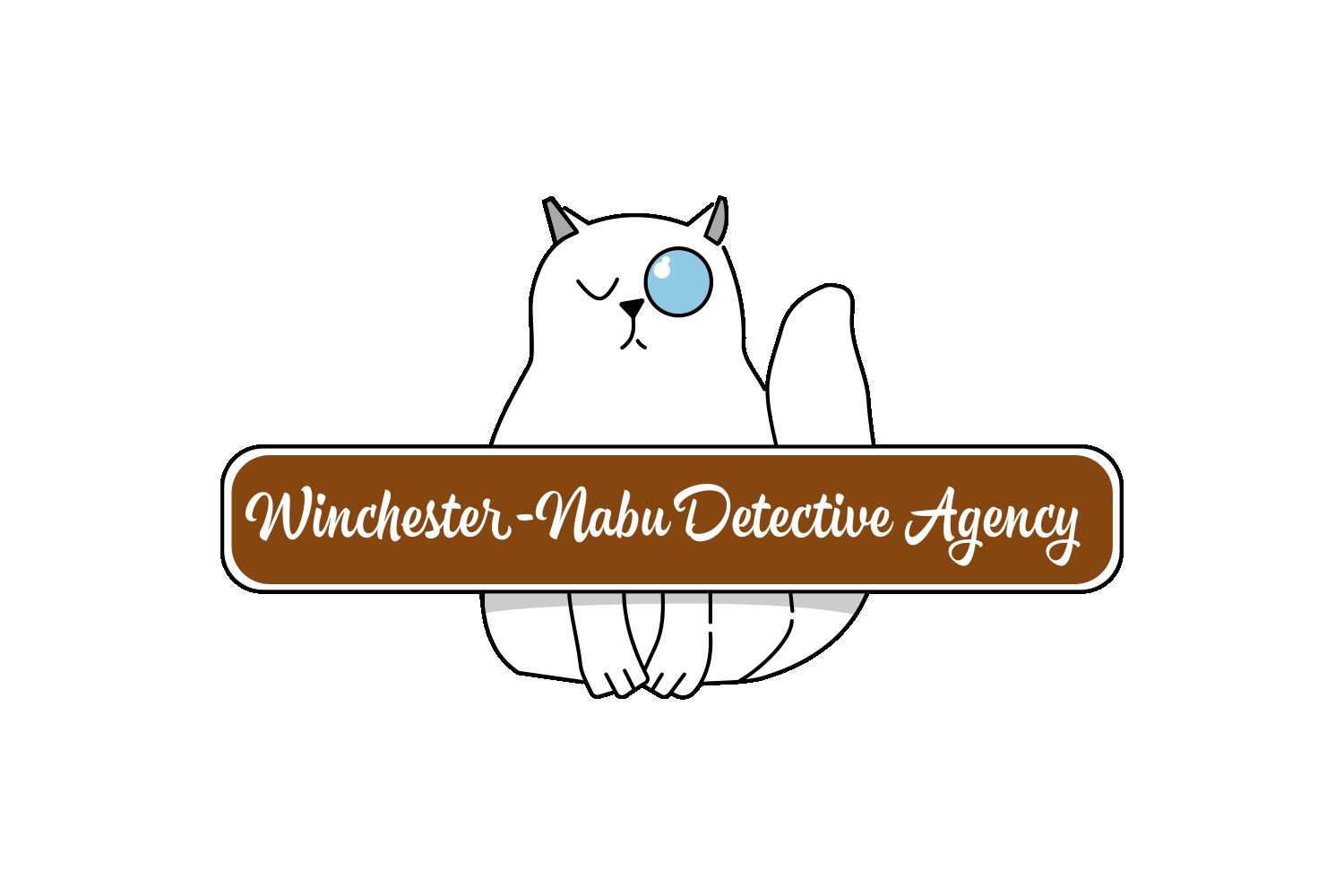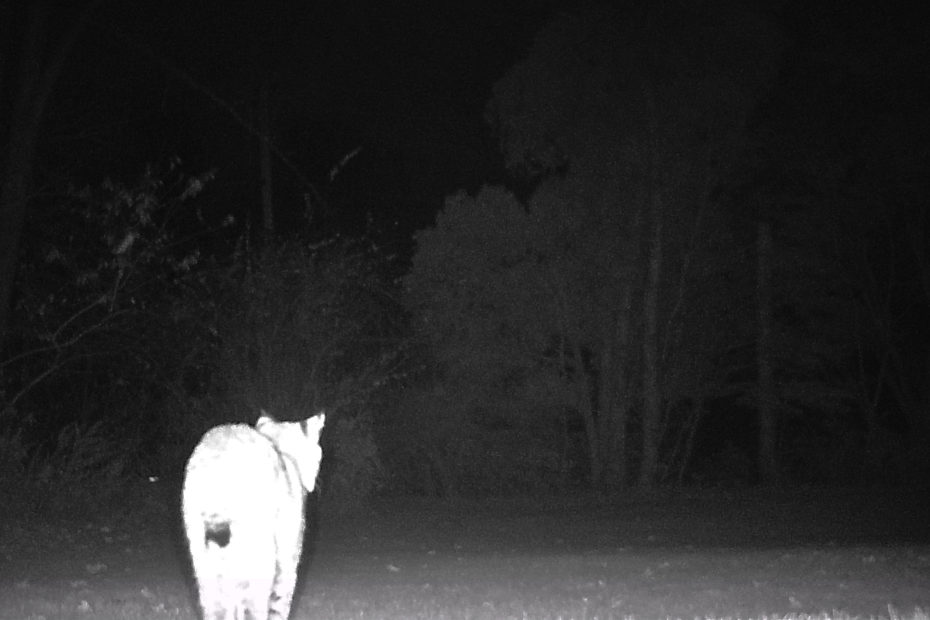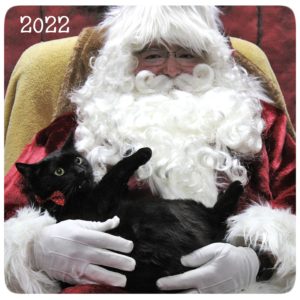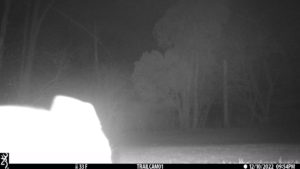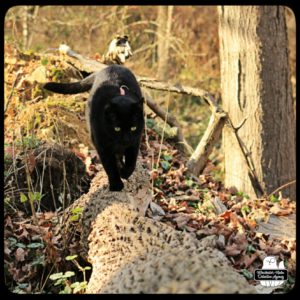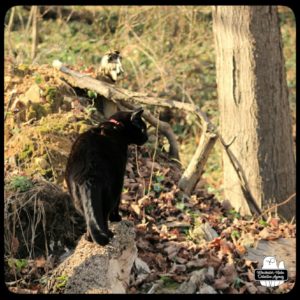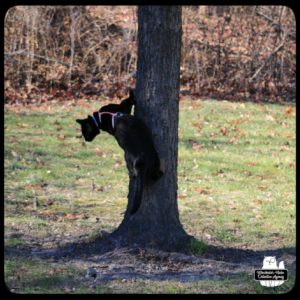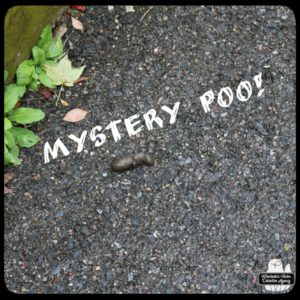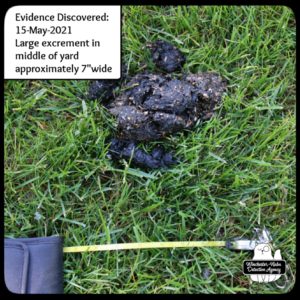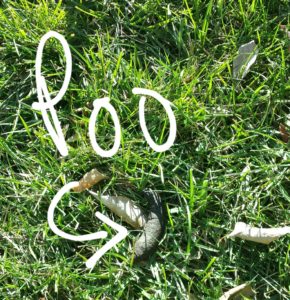This work is supported by the generous backers who adore my cat stories at Patreon.com/amberunmasked and they also get first access to what’s happening with my books and podcast.
Where We Left Off:
More turkeys flocked to the estate and gathered in the woods with other creatures to discussed the problems with humans.
Dirty Jobs:
Is it good news that our new bobcat friend is still around? I want to think so, but as recent cases have pointed out, normally elusive animals are losing their homes and coming into areas where people live. As for this bobcat or any other, they are known to be in this area but it’s rare to see. That’s one noteworthy difference: we’ve spotted it four times in the day time among the human staff here at the Winchester-Nabu Detective Agency. The rest of the times have been caught by the trail camera. Those may be normal times for a bobcat to come through and we simply never knew it until this camera was set up. I appreciate this technology because I don’t think I would have enjoyed being a Victorian naturalist in a forest waiting for days and then try to draw a picture of something that only appeared for a few seconds.
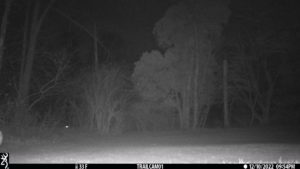
The last date we have of any sign of the bobcat was December 10, 2022 around 10pm. It was only 33ºF which could affect the batteries inside the camera. This model camera has a 0.3 second trigger speed.
Bobcats used to be populated widely all over North America. New Jersey’s population got so low, we had to have some brought in from Maine and Massachusetts to help repopulate. The wild cats are fortunate some people here cared about their status. A team began to tag and collect data first with satellite collars then with GPS collars:
The satellite collars, however, proved to be valuable tools that cut down on fieldwork. The collars beamed data to a satellite. The data was then emailed to Mick Valent’s team. That particular research process, though productive, did not last. In 2004-2005, the program switched to GPS collars that store data. The batteries die within one year, at which point the signal changes and the collar falls off. The staff heads out to retrieve the collar with its data.
As more data surfaced, Mick and his team came to an important realization. Roads and development seemed to have a major impact on prime areas of bobcat habitat: Kittatinny Ridge and a large tract around West Milford. — New Jersey Skylands, Summer, 2010
Bobcats prefer the type of habitat that can provide both open spaces, mountains, and covered forests. This is where humanity’s penchant for over developing real estate crops its ugly head again. I covered that quite a bit in the previous case with the turkeys. Male bobcats can have a range of 25 square miles; female bobcats tend to have smaller homes in order to raise their babies in places that they think are safe. That being said, since the bobcat passes by our trail camera taking the same path with confidence and familiarity, perhaps it’s safe to believe that it’s a female.
A couple of hikers had a magical encounter with a whole family of bobcats at NJ’s High Point State Park.
Over a 12-year period, a professional working dog named Bear proved to be the best method for collecting data. Bear and his handler, Gretchen Fowles, who is a GIS Specialist, found bobcat scat. That poop gave incredible amounts of information about the bobcats including individual DNA. Bear and Gretchen’s work identified over 170 individual bobcats in that area.
After Bear passed away, a new dog named Fly was hired. To learn more about the incredible canine workers and handlers who do this important field research, visit Working Dogs for Conservation. If not for these dogs and humans, we wouldn’t have all this scientific data gathered in the same amount of time.
If you know about a dog who may be euthanized because it’s not great for a family environment but has a strong will and passion for play, that dog may be perfect as a working detection dog! You can learn more about them at Rescues 2 the Rescue.
We find so much poop! I wish we could collect it and send it to a lab like the dogs do. I’m always taking photos of mystery poo.
Other Big Cats:
A couple weeks ago, I searched to see if larger wild cats were in New Jersey. This is a debatable topic and seems there still isn’t validation. As of my latest internet search, 26 people have had mountain lion sightings (allegedly). This type of thing has also happened in England. People have taken photos and swear that there are mountain lions or something else, but photography experts deduce the photos are moggies, as they say. Regular house cats living in places where people still allow them to roam freely in their neighborhoods. I believe I have mentioned the “Cougar or Not” Twitter feed, but as Twitter implodes, I don’t encourage using it unless you have to.
Have you heard of Los Angeles’ famous mountain lion? They named it P-22 which is the reference to being the 22nd tagged in the national wildlife study and has been called such since 2012. Seriously, LA? You couldn’t come up with a better name? Even tagged sharks are given proper names. I mean it is LA where people name their children stupid shit so there are probably kids out there named I-80 or PCH.
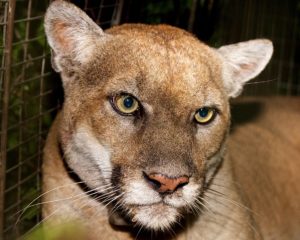
This famous cougar was tranquilized in someone’s backyard and taken for tests after it mauled a couple of pet chihuahuas from some other yard. I wouldn’t blame it for trying to eat chihuahuas. Everyone in LA loves Mexican food. (I had to! The joke was right there!) The people who have been studying the animal said this was unusual behavior and they hope the tests reveal something usual.
Before this case file was scheduled to publish, there were updates from the CA Division of Fish and Wildlife. They euthanized him. After gathering his data for over a decade, vets made this decision. It sounds like he was hit was vehicle and still managing to exist. The brain injury and possibly any deficits in his hunting skills could mean he wouldn’t have lasted long. They gave a list of the things they found wrong with P-22 during his examinations:
The results of these tests and screenings showed significant trauma to the mountain lion’s head, right eye and internal organs, confirming the suspicion of recent injury, such as a vehicle strike. The trauma to his internal organs would require invasive surgical repair.
The examination also revealed significant pre-existing illnesses, including irreversible kidney disease, chronic weight loss, extensive parasitic skin infection over his entire body and localized arthritis, all of which have led to the unfortunate deterioration in P-22’s overall condition. — CA DFW News
California Fish and Wildlife is not interested in finding the driver. They said something basically the same as I’ve been saying about New Jersey and my friends have been saying about their own states.
This situation is not the fault of P-22, nor of a driver who may have hit him. Rather, it is an eventuality that arises from habitat loss and fragmentation, and it underscores the need for thoughtful construction of wildlife crossings and well-planned spaces that provide wild animals room to roam.
Case Findings:
With this newest sighting caught on camera of a bobcat, it’s brought about some key questions that we’d love to solve:
- Is it always the same animal?
- Is it a female or male?
- What makes this spot next to Fort Winchester special when it’s so close to a busy road?
- Can we collect scat and have it analyzed like the dog teams?
Case Status: Open
